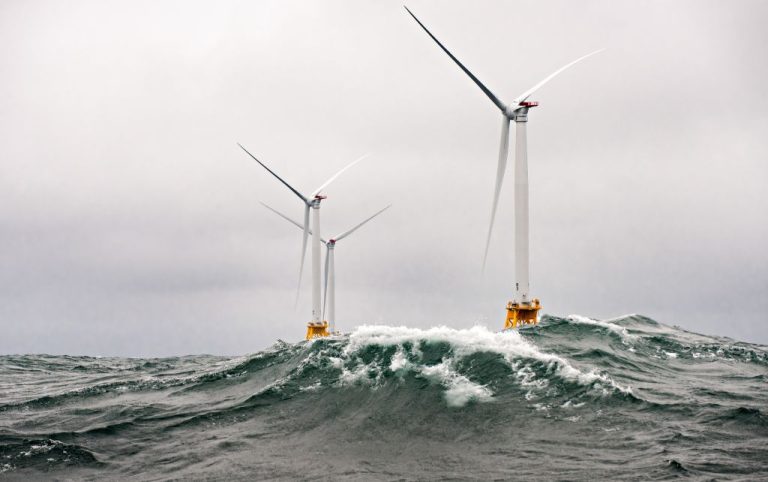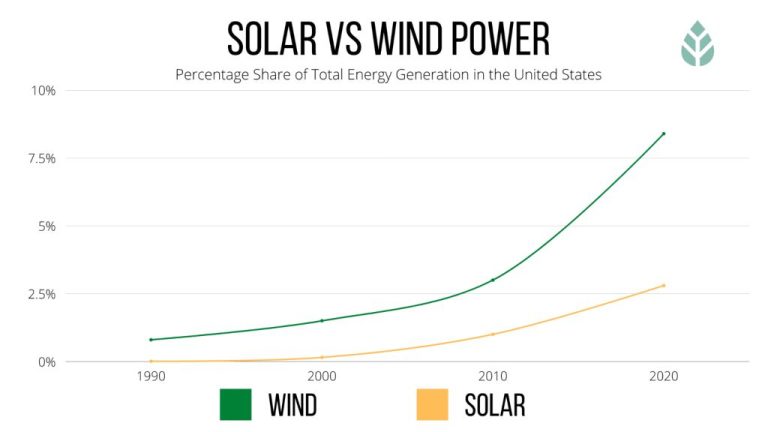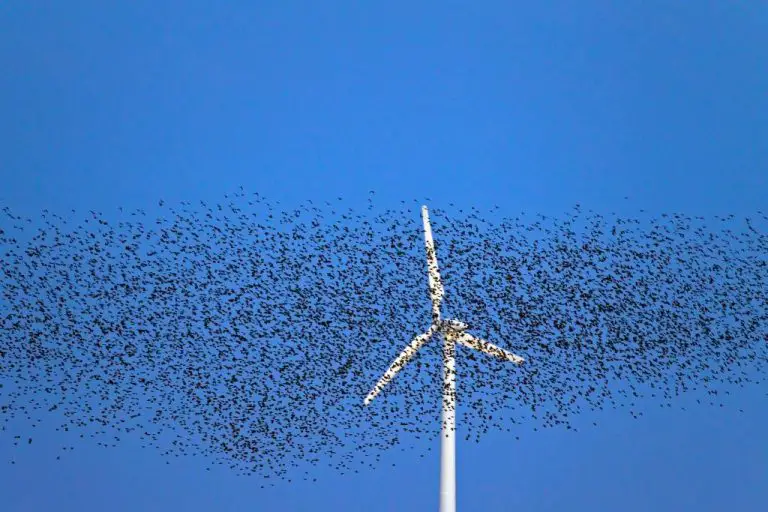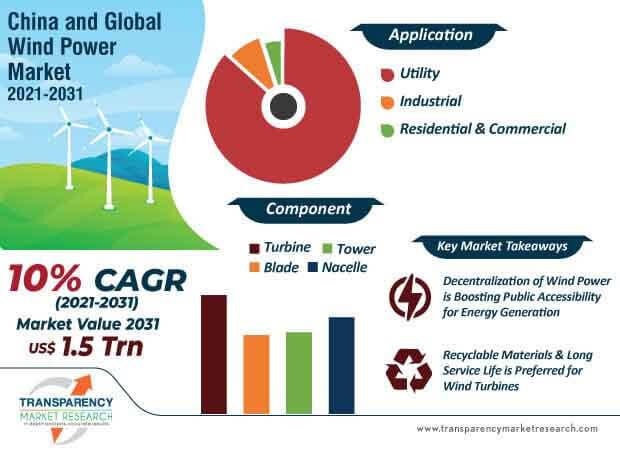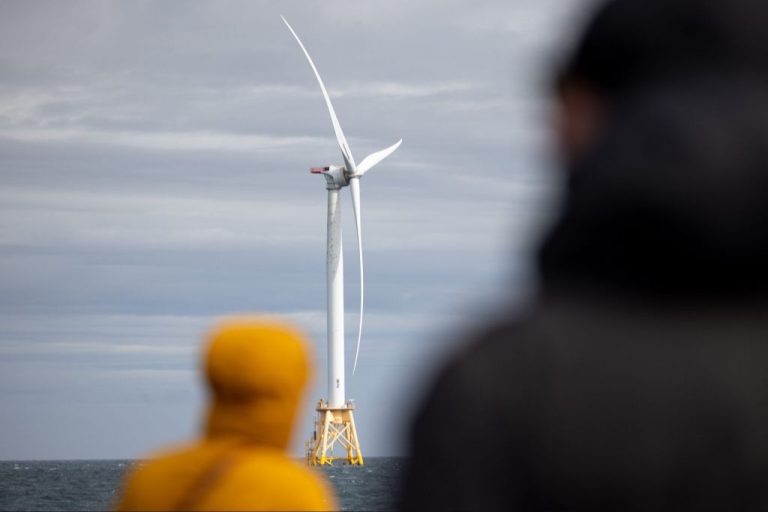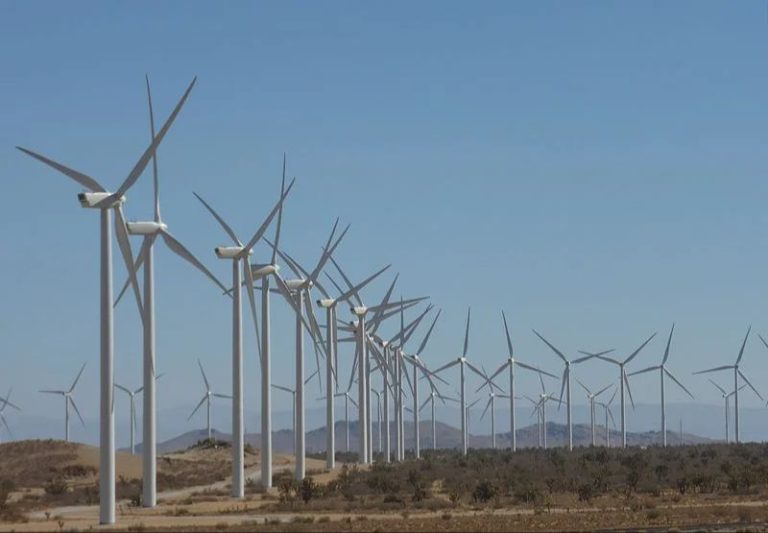How Is Wind Generated On Earth?
Wind is one of the most important forces of nature on Earth. It shapes our climate, weather, and even geography. Wind powers ocean currents, carries seeds and pollen over long distances, and generates renewable energy. Without wind, the world would be a vastly different place.
Wind occurs due to differences in air pressure, which causes air to flow from areas of high pressure to low pressure. This movement of air is fundamental to various meteorological phenomenon like storms, trade winds, and the jet stream. Understanding how wind is created gives insight into global climate patterns and local weather.
This article will provide an overview of how wind is generated on Earth, looking at global wind patterns, local wind patterns, the forces that drive wind, and modern wind forecasting. We’ll gain a deeper appreciation for this invisible but mighty force that has played such a critical role in shaping life on our planet.
What is Wind?
Wind is the natural movement of air across the earth’s surface. It is caused by differences in atmospheric pressure due to the unequal heating of the earth by the sun. Wind flows from areas of high pressure to areas of low pressure. The greater the difference in pressure, the stronger the wind blows.
Wind is an indirect form of solar energy. The sun heats the earth’s surface unevenly, creating temperature differences that cause air to circulate between hot and cold areas. As this air moves, it is called wind. Wind is a renewable energy source that can be used to generate electricity through wind turbines.
Wind speed and direction are influenced by many factors, including the rotation of the earth, terrain, and bodies of water. Global wind patterns transport warm and cold air around the planet. Local winds develop due to small-scale differences in temperature and pressure. Modern weather studies and forecasts track wind patterns across local and global scales.
Global Wind Patterns
Certain consistent wind patterns exist around the world due to the rotation of the Earth and the sun’s heating effect. The trade winds blow from the subtropical high-pressure belts towards the equator in both hemispheres. These steady winds allowed sailing ships to efficiently travel long distances in the Age of Exploration. The westerlies are strong winds that flow from the subtropical high-pressure zones towards the polar low-pressure zones in both hemispheres. This predominantly west-to-east air flow brings warm, wet air from over the oceans to lands at higher latitudes. The polar easterlies blow from the polar high-pressure systems towards the low-pressure zones around 60° latitude. These cold winds blow from east to west over the polar regions.
Local Wind Patterns
Local wind patterns are winds that are generated on a smaller scale due to the interactions between land surfaces and bodies of water. Two important local wind patterns are land/sea breezes and mountain/valley breezes.
Land breezes occur at night when the land cools faster than the nearby body of water. The cooler, denser air over land flows towards the relatively warmer water, creating a light onshore wind. During the day, the opposite occurs – the land heats up faster than the water, creating warmer, less dense air that rises. The cooler air over the water moves in to replace it, creating a sea breeze.
Mountain and valley breezes work on similar principles. At night, the mountain slopes get colder than the nearby valley. The denser cold air flows down the mountain into the valley as a mountain breeze. During the day, the valley heats up faster than the mountains. The warm valley air rises upslope, creating a valley breeze.
These local wind patterns can be quite regular, alternating between onshore and offshore winds on a daily cycle. They are usually light winds, but still play an important role in local weather and climate. The convergence of land/sea breezes along the coastline can sometimes spawn clouds and precipitation.
Wind Formation
Wind is created by differences in atmospheric pressure within the Earth’s atmosphere. When air moves from high pressure to low pressure areas, wind is formed. The greater the difference in pressure between two locations, the stronger the wind blows as air rushes from high to low pressure. There are four main forces that drive wind formation:
- Uneven heating of the Earth’s surface by the sun
- The Coriolis effect from the rotation of the Earth
- Irregularities in the Earth’s surface such as mountains, oceans, and vegetation
- Cold fronts encountering warm fronts
As the sun heats the Earth’s surface, it does so unevenly because of the curvature of the Earth and cloud coverage. This variation in surface temperature causes corresponding differences in air pressure. Air naturally flows from areas of higher pressure to areas of lower pressure. As this air flows, wind is created.
Coriolis Effect
The Coriolis effect is a phenomenon that causes fluids like air and water to curve as they travel across or above Earth’s surface. It is caused by Earth’s rotation on its axis. As Earth spins, the atmosphere and oceans move with it. This movement causes an apparent deflection of motion of air masses and ocean currents compared to the ground below them. The faster Earth rotates, the faster the atmosphere and water must spin with it. This creates greater deflection and more curved pathways.
The Coriolis effect impacts global wind patterns significantly. In each hemisphere, it causes winds to curve to the right in the Northern Hemisphere and to the left in the Southern Hemisphere. This is why in the Northern Hemisphere, winds circulate counter-clockwise around low pressure zones while they circulate clockwise around low pressure zones in the Southern Hemisphere. Overall, the Coriolis effect establishes the large-scale patterns of easterly and westerly winds that transport weather systems around the planet.
Forces That Drive Wind
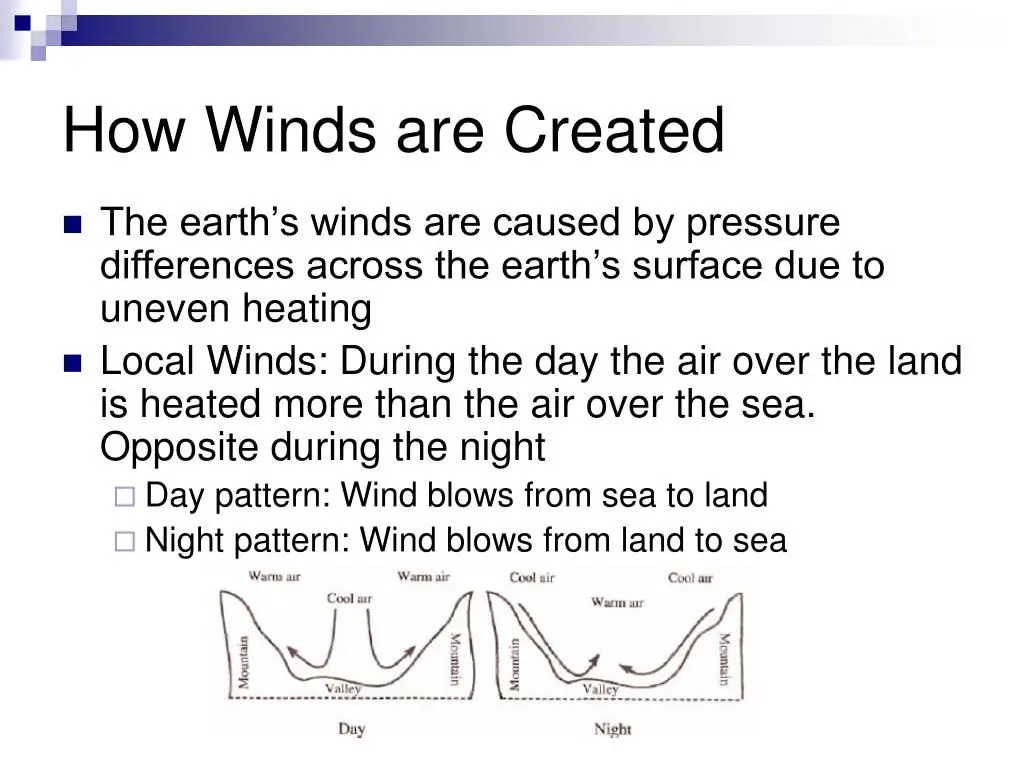
There are three major forces that cause wind on Earth: pressure gradient force, Coriolis force, and frictional force. The pressure gradient force is caused by differences in air pressure over a given distance. Air flows from areas of high pressure to areas of low pressure. The greater the difference in pressure, the stronger the wind.
The Coriolis force is generated by Earth’s rotation. As air moves from high to low pressure in the Northern Hemisphere, it is deflected to the right by the Coriolis force, creating clockwise circulations. In the Southern Hemisphere, the deflection is to the left, creating counter-clockwise circulations. This force gives winds their curving pattern.
Frictional force acts between the atmosphere and the Earth’s surface. It causes winds to slow down due to drag as air flows over land and water. Mountains and other geographic features can channel winds and impact their speed and direction. Friction force is strongest at the surface and decreases at higher altitudes.
The interplay of these three forces determines the speed and direction of wind across the planet. Differences in the forces regionally lead to the distinct global and local wind patterns observed on Earth.
Other Factors
In addition to global wind patterns driven by the rotation of the Earth and the sun’s heating effect, there are several other factors that influence wind formation on a local level:
Impact of Terrain
The shape of the terrain, including mountains, valleys, and other geographic features, can channel wind in certain directions or block wind flow. Wind speed typically increases in narrow valleys and mountain passes. The steepness of terrain also impacts wind patterns and speed.
Bodies of Water
Large bodies of water like oceans and lakes absorb and release heat slower than land. This differential heating creates local circulation patterns from water to land and back. During the day, the air above water is cooler than air over land, causing an onshore breeze. At night, as the land cools faster, an offshore breeze develops.
Vegetation
Areas with abundant vegetation like forests tend to have lower wind speeds near the ground due to friction from leaves and branches. However, vegetation can increase turbulence and gustiness. In open areas with sparser vegetation like grasslands, winds blow more freely.
Modern Wind Studies
In the past few decades, scientists have gained a much deeper understanding of global and local wind patterns thanks to modern technology and measurement techniques:
Weather balloons equipped with sensors can measure wind speed, direction, temperature, humidity and atmospheric pressure as they rise up through the various layers of the atmosphere. Networks of weather balloons provide valuable atmospheric data over large regions.
Weather stations on land and buoys at sea also contain anemometers and wind vanes to record surface wind conditions. The many thousands of stations around the world allow meteorologists to see wind patterns unfold in real time.
Weather satellites use scatterometers to bounce microwave radar signals off the ocean surface, measuring wind speed and direction offshore. Satellite imagery also tracks the movement of moisture, clouds and storms that influence winds.
Computer models combine all these wind measurements with temperature, pressure and humidity data to simulate and predict wind patterns around the planet. The advanced data assimilation and computing power allows model accuracy to improve steadily.
So while winds have blown across the Earth for eons, it is only with recent technology that we’ve begun to deeply understand the forces that generate these invisible currents of air. Improved data and modeling continues to provide new insight into local and global wind dynamics.
Conclusion
In summary, wind is created by the uneven heating of the Earth’s surface by the sun and the rotation of the Earth. As warm air rises, cooler air must flow in to replace it, creating wind currents. The rotation of the Earth also impacts wind patterns through the Coriolis effect, which causes winds to curve. Understanding wind formation helps meteorologists forecast weather and model climate systems. Knowledge of global wind patterns aids transportation and infrastructure planning. On a local level, being aware of wind conditions allows for making the most of natural wind power and protecting buildings and crops from potentially damaging winds. With advanced wind measurement tools and atmospheric science, we continue to deepen our comprehension of the complex dynamics involved in Earth’s wind generation.
Comprehending wind formation is key because wind impacts so many aspects of human life and planetary systems. Wind powers ocean currents, shapes landscapes, and enables flight. By studying how wind is created by Earth’s atmosphere and rotation, we gain a window into our planet’s intricate interconnected systems. Just as the causes of wind are complex, so are its effects. An exploration of wind takes us through meteorology, climatology, aerodynamics, and more. The better we understand the fundamental forces generating wind, the better prepared we can be to utilize, adapt to, and protect ourselves from wind’s invisible power.

